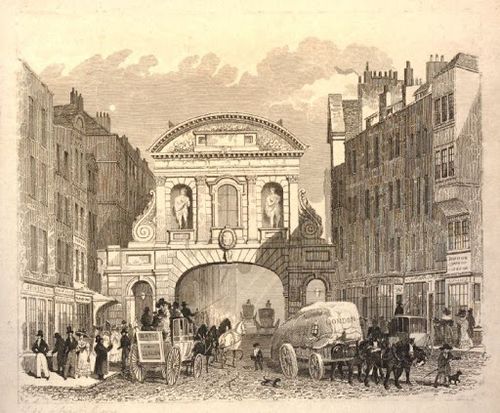Annotation:Temple Barr
X:1 T:Temple Barr M:2/2 L:1/8 K:Gmin G2A2 | B2G2B2c2 | d4 d2 cB | A2B2c2d2 | B2G2G2A2 | B2G2B2c2 | d4 d2 cB | A2G2A2^F2 | G4 || d2e2 | f2e2f2g2 | f4 f2ed | c2d2e2d2 | c4 dcde | d4c4 | B4 G2A2 | B2G2B2c2 | d4 d2 cB | A2B2c2d2 | B2G2G2A2 | B2G2B2c2 | d4 d2 cB | A2G2A2^F2 | G4 ||

London’s Temple Bar was originally built in 1670 and stood in the vicinity of Fleet Street and the Strand. It was dismantled in 1878 when Fleet Street was widened and moved to Theobalds Park in Chestnut. There has been previous gateways on the site, wooden structures, the last of which was destroyed in the Great Fire. The 1670 structure was the most elaborate, built by masons Joshua Marshall and Thomas Knight (although traditionally attributed to Sir Christopher Wren), featuring a main arch that spanned the roadway with pedestrian arches on either side. There was a central room at the top and four statues: Charles II, Queen Anne (consort of James I and formerly a princess of Denmark), James I and Charles I, all the work of John Bushnell.

